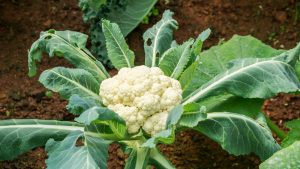
Attract bees– Bees are in danger of extinction and have been declared the most important animal species in the world for their vital function in nature. So if they disappear in more or less time we will also other species. This is one of the main reasons to try to help them as much as possible. And one way to achieve this is to have a variety of flowers suitable for them in our home, mainly throughout the spring and summer.
This type of flowers are those that occur in honey plants for beekeeping, ie the type of plants used to breed these insects. If you want to know which are the favorite flowers of bees. Do not miss this Green Ecology article in which we show you the plants and flowers that attract bees.
Honey plants for beekeeping: the favorite flowers of bees

We started talking about the plants and flowers that attract bees by showing you an exhaustive list of honey plants for beekeeping that. As we said before, are the most used in the care and breeding of these pollinating insects. Because they are plants that feed the bees. Therefore, take note to include these plants with flowers in your garden. Terrace or orchard, you will see that there are plants themselves, trees and shrubs.
Other plants and flowers that attract bees
Apart from the ideal honey plants to attract bees and help them, we recommend other species of plants with flowers that. Although not considered honey, will be of great help for these pollinating insects. Take note of other plants and flowers that attract bees and you can easily have in your garden, terrace or orchard:
Cattle Mint: also scientifically called Nepeta cataria and commonly the grass of cats, cat basil, catnip, gataria, catnip. Or cat mint is a good option to attract bees when this plant is in full bloom.
Oregano: is called scientifically Origanum vulgare. This plant will seem good option because it is one of the best plants to help bees and, at the same time. You can use it a lot in your kitchen. In addition, it helps all kinds of pollinating insects. Such as bees, wasps and bumblebees , and also birds.
Lantana: is a genus of plants with very striking flowers is very good to attract pollinating insects. And thus help bees in danger of extinction. However, we must be careful because its fruits are toxic for us and some animals. So if you have children or curious pets do not choose this plant.
Zinnia: zinnias are a genus of various plants, but all of them are very useful for pollinators like bees and look fantastic in any garden or orchard. Plants are made of fine and long stems with large flowers above and of different colors, very striking.
Margaritas: among the plants to help the bees we also find the typical daisies, serving any kind. Since any type of daisy plants will be very beneficial for pollinators.
Melisa: you may know the Melissa officinalis for being one of the most used medicinal plants, especially to calm down and get to sleep. We recommend having it in your home to attract bees and prevent them from becoming extinct. And, in addition, you can enjoy its benefits in infusion if you need it. This plant blooms throughout the summer and produces a large amount of flowers.
Siemprevivas: it is a good option to start attracting bees to your garden soon, because it starts to bloom when there is little left for the end of winter. But the spring has not yet started. Learn the Cultivation and care of the evergreens with this other Green Ecology article.
How to help bees not to become extinct
Now that you know what flowers are good for bees, we want to give you ideas so that you help them to the maximum with simple gestures and thus. Among all, we avoid that they are extinguished, which would be tragic for the whole planet. Because it would reduce life in general drastically in a relatively short time. So, these are other ways to help bees to prevent them from becoming extinct.
You can create your own space to help bees at home, dedicating a part of your garden, terrace, balcony. Or orchard to cultivate some of the flowering plants that we mentioned earlier. In addition, you can place devices that can help them create a hive. Such as boxes for beekeeping but leaving them open. The latter only recommend it if you do it in a large garden or garden, to prevent them from entering your home.
Stop using products that pollute the environment, such as pesticides, pesticides and insecticides with synthetic chemicals. And start using natural products to care for your plants. This way you will take care of the plants, flowers and bees.
If you eat honey, before buying, make sure that it is of organic production. Since it does not harm the population of bees. Which production at industrial levels does, apart from that they also process much more the final product and be less healthy for us .
Make requests to your government or city council to include plants with flowers that bees eat, such as honey bees. And to ask them not to use pesticides that are harmful to them when caring for the public landscaped areas of your locality.
Supports organizations and associations that carry out projects to prevent the extinction of bees. You can do it by volunteering or by donating materials. Or money so they can continue with their work.





